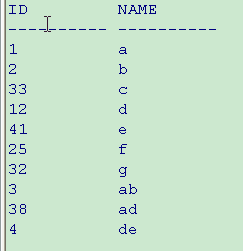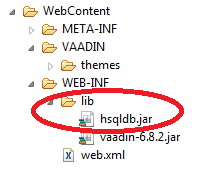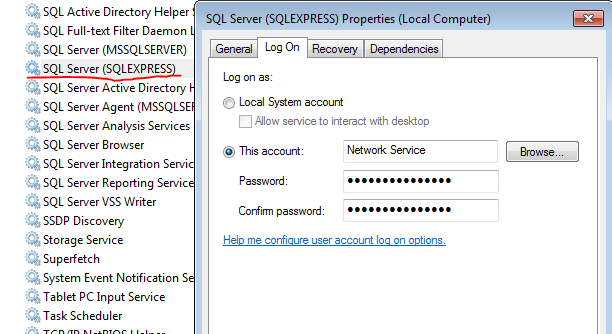PL/SQL中集合出现“ORA-06533:下表超出数量”的问题解决
PL/SQL中集合出现“ORA-06533:下表超出数量”的问题解决
VARRAY是在Oracle8G的时候引入的一个类型,是一种密集填充数组,更容易被理解成为一个传统的数组。在创建这些数组的时候,都有一个尺寸,需要非常注意的是VARRAY的下表是从1开始的,在其他很多变成语言中,数组的下表都是从0开始的,比如JAVA。在实际的使用中,初学者经常会出现如下的错误提示:
ORA-06533:下表超出数量
www.zzzyk.com
例如下面的代码就会出现该错误:
[sql]
DECLARE
TYPE NUM_VARRAY IS VARRAY(100) OF NUMBER NOT NULL;
V_NUM_VARRAY NUM_VARRAY:=NUM_VARRAY();
BEGIN
FOR J IN 1 .. 100 LOOP
V_NUM_VARRAY(J) := J;
END LOOP;
FOR I IN 1 .. V_NUM_VARRAY.COUNT LOOP
DBMS_OUTPUT.PUT_LINE(TO_CHAR(V_NUM_VARRAY(I)));
END LOOP;
END;
这个错误的原因是什么呢?我们定义了一个为空的VARRAY,在第一个J循环的时候,将1赋值给V_NUM_ARRAY(1),但是因为实际上,该集合变量并没有存储空间,因此PL/SQL就会报一个“下表超出数量”的错误。
如何去解决这个问题呢?查阅Oracle 的MOS 找到了如下描述:
EXTEND Collection Method
EXTEND is a procedure that adds elements to the end of a varray or nested table. The collection can be empty, but not null. (To make a collection empty or add elements to a null collection, use a constructor. For more information, see "Collection Constructors".)
The EXTEND method has these forms:
EXTEND appends one null element to the collection.
EXTEND(n) appends n null elements to the collection.
EXTEND(n,i) appends n copies of the ith element to the collection.
Note:
EXTEND(n,i) is the only form that you can use for a collection whose elements have the NOT NULL constraint.
EXTEND operates on the internal size of a collection. That is, if DELETE deletes an element but keeps a placeholder for it, then EXTEND considers the element to exist.
Example 5-20 declares a nested table variable, initializing it with three elements; appends two copies of the first element; deletes the fifth (last) element; and then appends one null element. Because EXTEND considers the deleted fifth element to exist, the appended null element is the sixth element. The procedureprint_nt prints the nested table variable after initialization and after the EXTEND and DELETE operations. The type nt_type and procedure print_nt are defined inExample 5-6.
Example 5-20 EXTEND Method with Nested Table
DECLARE
nt nt_type := nt_type(11, 22, 33);
BEGIN
print_nt(nt);
nt.EXTEND(2,1); -- Append two copies of first element
print_nt(nt);
nt.DELETE(5); -- Delete fifth element
print_nt(nt);
nt.EXTEND; -- Append one null element
print_nt(nt);
END;
/
Result:
nt.(1) = 11
nt.(2) = 22
nt.(3) = 33
---
nt.(1) = 11
nt.(2) = 22
nt.(3) = 33
nt.(4) = 11
nt.(5) = 11
---
nt.(1) = 11
nt.(2) = 22
nt.(3) = 33
nt.(4) = 11
---
nt.(1) = 11
nt.(2) = 22
nt.(3) = 33
nt.(4) = 11
nt.(6) = NULL
---
上面的大意是:
www.zzzyk.com
EXTEND方法为VARRAY或者NESTED TABLE集合中的一个或者多个新元素分配存储空间。有两个可以选择的选项,默认情况下,是它在向集合添加值之前的时候,为该值分配存储空间。他的两个参数的意思分别是,第一个参数是增加多少个元素的空间,第二个参数的意思是引用集合中已经存在的元素的索引,该元素就会被复制到新的元素上。
上面出错的代码修改为如下可以正常运行了:
[sql]
DECLARE
TYPE NUM_VARRAY IS VARRAY(100) OF NUMBER NOT NULL;
V_NUM_VARRAY NUM_VARRAY:=NUM_VARRAY();
BEGIN
FOR J IN 1 .. 100 LOOP
V_NUM_VARRAY.EXTEND;
V_NUM_VARRAY(J) := J;
END LOOP;
FOR I IN 1 .. V_NUM_VARRAY.COUNT LOOP
DBMS_OUTPUT.PUT_LINE(TO_CHAR(V_NUM_VARRAY(I)));
END LOOP;
END;





